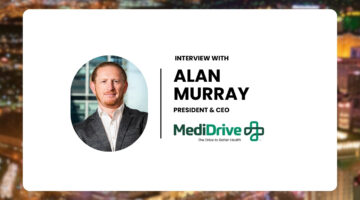
When J.P. Morgan Chase and Amazon get involved, you know the evolution of healthcare is officially in the spotlight. We are – and have been – witnessing a rise in high deductible health plans (HDHPs) and growing out-of-pocket expenses. In 2016, CMS estimated consumers spent $352.5 billion out-of-pocket on healthcare.
The latest data shows that healthcare bankruptcy filings have more than tripled in 2017. This isn’t entirely surprising since 68 percent of patients failed to fully pay off medical bill balances in 2016, up from 53 percent in 2015, which is expected to climb to 95 percent by 2020.
The good news is that consumers and providers certainly agree on this issue – we need smarter, more compassionate financing options. It can get confusing, however, to understand the difference between credit cards, promise-to-pay programs and opt-in, long-term financing.
Problematic options
More often, providers are asking for payment of services rendered up-front. Patients are worried about paying for their care, and survival instincts create pressure; meanwhile providers are worried about bad debt and feel they have no choice but to establish method of payment as quickly as possible.
Many providers offer promise-to pay-programs, which are zero percent interest payment plans on a short-term agreement decided upon by the hospital (typically three to 12 months). However, many patients cannot afford the high monthly payments that this can generate. Other patients will put their balance due on a credit card or a medical credit card the provider is partnered with. The downside to this is high interest rates and other punitive actions such as credit reporting, which can lead to patient dissatisfaction.

NEMT Partner Guide: Why Payers and Providers Should Choose MediDrive’s TMS
Alan Murray on improving access for medical transportation.
Think about it. When was the last time an average person spent $6,000? Maybe on a down payment or a vacation. And you likely saved up first. But medical emergencies are unexpected and calculating medical expenses is practically impossible.
Even if a patient does proactively save for healthcare costs, there are so many unpredictable charges. For example, say a patient saved the average 2016 deductible of $4,358. A 2017 Yale study found that 22 percent of privately insured individuals who went to in-network hospitals were treated by out-of-network physicians and thereby potentially exposed to significant unexpected costs.
Getting creative
Opt-in third party financing has only recently started to shine and has already proven to be a reliable source of patient revenue. For example, take the instance of the largest health system in a region in a southern state which has 14 specialties, 7 hospitals and a net patient service revenue of $2 billion. Comprehensive care is your core mission, and executives have realized they want to establish a fully integrated financial experience as well.
The system previously offered some financing options, but not ones that necessarily aligned with the new world of HDHPs. Its patients request financing plans for as little as $5 a month, which is not a sustainable model. What the system needed was a proactive strategy that enabled patients to pay their bills regardless of his or her financial situation and effectively reimbursed the system in order to maintain a healthy bottom line.
The solution? Establishing a flexible, opt-in payment program that allows patients to customize their payment plans and manage bills online, such as recurring payments. Probably more significantly, this program would allow patients to change their options as their lives change—a major step in building consumer trust. Cut to a year later, as a result of the program, the system has referred more than $33.1 million in active patient accounts with a potential collection value of 81.9 percent. It has also seen a dramatic increase in volume in the past 12 months, as HDHPs continue to rise and the health system grows.
With HDHPs, patients are now starting to ask proactively about financing, which is good news. This mindset opens the door to better patient-provider trust, financial education, and ultimately patient engagement. If we simply account for the fact that patients’ lives aren’t linear or predictable, and that they are ultimately trying to pay – providers are going to get paid more. And just as importantly, patients can get the care that they need, when they need it, without worrying about how they’ll pay their medical bills.
Photo: JamesBrey, Getty Images
Mark Spinner is CEO of AccessOne, a patient financing company that helps hospitals and health systems ensure every patient can afford care regardless of financial situation.
This post appears through the MedCity Influencers program. Anyone can publish their perspective on business and innovation in healthcare on MedCity News through MedCity Influencers. Click here to find out how.








